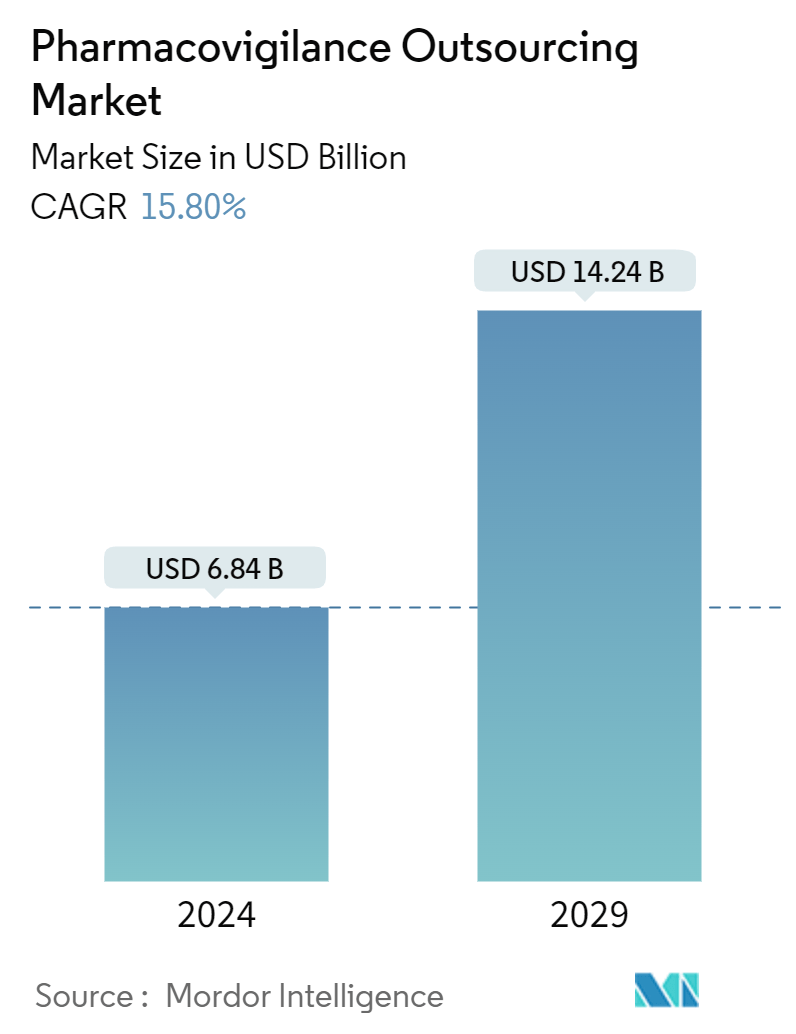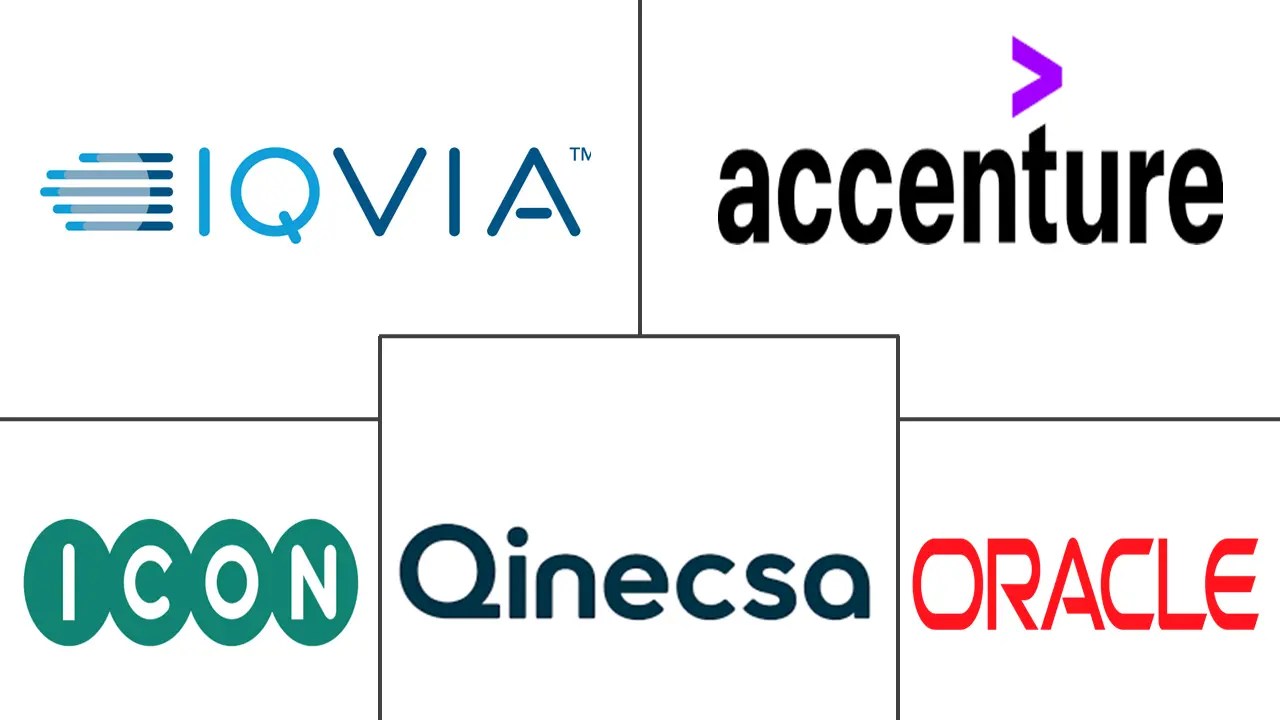Market Size of Pharmacovigilance Outsourcing Industry

| Study Period | 2019 - 2029 |
| Market Size (2024) | USD 6.84 Billion |
| Market Size (2029) | USD 14.24 Billion |
| CAGR (2024 - 2029) | 15.80 % |
| Fastest Growing Market | Asia Pacific |
| Largest Market | North America |
Major Players
*Disclaimer: Major Players sorted in no particular order |
Pharmacovigilance Outsourcing Market Analysis
The Pharmacovigilance Outsourcing Market size is estimated at USD 6.84 billion in 2024, and is expected to reach USD 14.24 billion by 2029, growing at a CAGR of 15.80% during the forecast period (2024-2029).
The market is driven by increased high-profile drug recalls due to safety concerns, a higher incidence of adverse drug reactions (ADRs) and drug toxicity, and the growing adoption of pharmacovigilance services. The rising incidence of adverse drug reactions and drug toxicity cases around the globe increases the demand for pharmacovigilance services for the effective reduction of these ADRs in a large population, which ultimately drives the market during the forecast period. For example, according to an article published in the International Journal of Basic and Clinical Pharmacology in March 2024, a retrospective observational study of adverse drug reactions reported in a tertiary care hospital in India over the past six years found that a total of 95 ADR reactions were reported. These adverse drug reactions were associated with a total of 108 prescribed drugs, and they were more common among females. Antimicrobials were causing the highest number of adverse reactions, with around 19.4% of ADRs caused by antimicrobial drugs, followed by antituberculosis drugs and radiocontrast with 17.59% of ADRs. Intravenous was the most common route related to the development of ADR. Hence, the increasing number of ADRs increases the demand for pharmacovigilance services to effectively monitor adverse drug reactions, which will drive the market during the forecast period. Also, the increasing number of high-profile drug recalls due to safety concerns is increasing pharmaceutical and biopharmaceutical companies' adoption of pharmacovigilance services to tackle the recall problem early and save resources, which will drive the market during the forecast period. For instance, in April 2024, Glenmark Pharmaceuticals recalled 6,528 bottles of Diltiazem hydrochloride extended-release capsules of medication used for high blood pressure treatment from the American market due to issues with dissolution specifications. In July 2023, Lupin Pharmaceuticals voluntarily recalled two lots of Tydemy (drospirenone, ethinyl estradiol, and levomefolate calcium) because of the results of a 12-month stability test. Tydemy is an oral contraceptive used to prevent pregnancy. Hence, the increasing recall of drugs raises the demand for pharmacovigilance services to identify adverse drug reactions at the initial stage and save the extra complications in large populations, which will drive the market during the forecast period. Moreover, the increasing adoption of pharmacovigilance services is expected to drive the market during the forecast period. For instance, in April 2023, PharmaLex Group planned to merge with Cpharm, a provider of pharmacovigilance services in Australia and New Zealand. The agreement will enable PharmaLex to increase the coverage of pharmacovigilance and medical services in Australia and New Zealand. Hence, such strategic activities increase the accessibility and affordability of pharmacovigilance services, which will increase the adoption and drive the market during the forecast period. In conclusion, the increasing incidence of adverse drug reactions and toxic cases and rising high-profile drug recalls increase the demand for pharmacovigilance service outsourcing and drive the market during the market. However, the lack of skilled pharmacovigilance professionals is expected to restrain the market during the forecast period.

